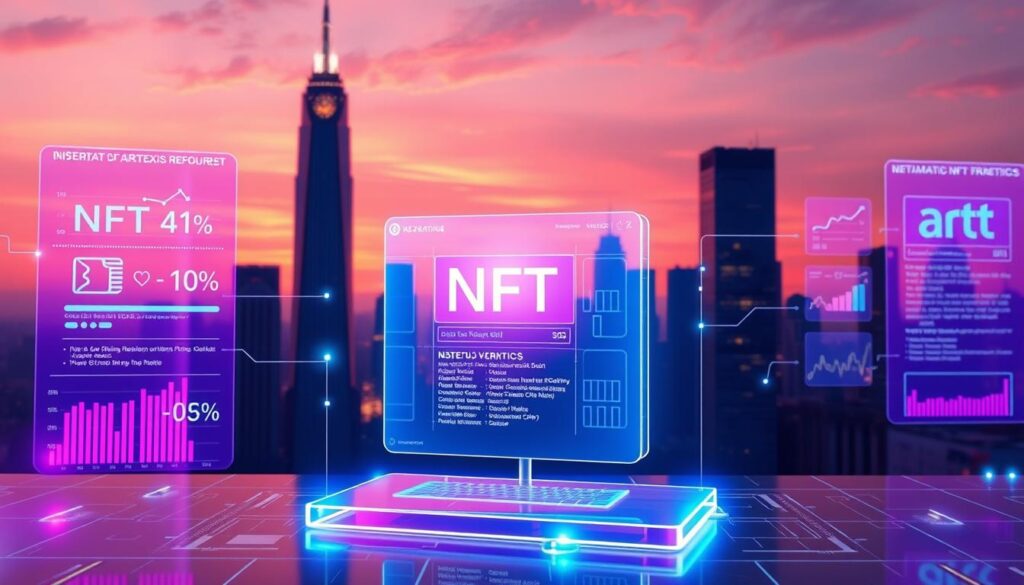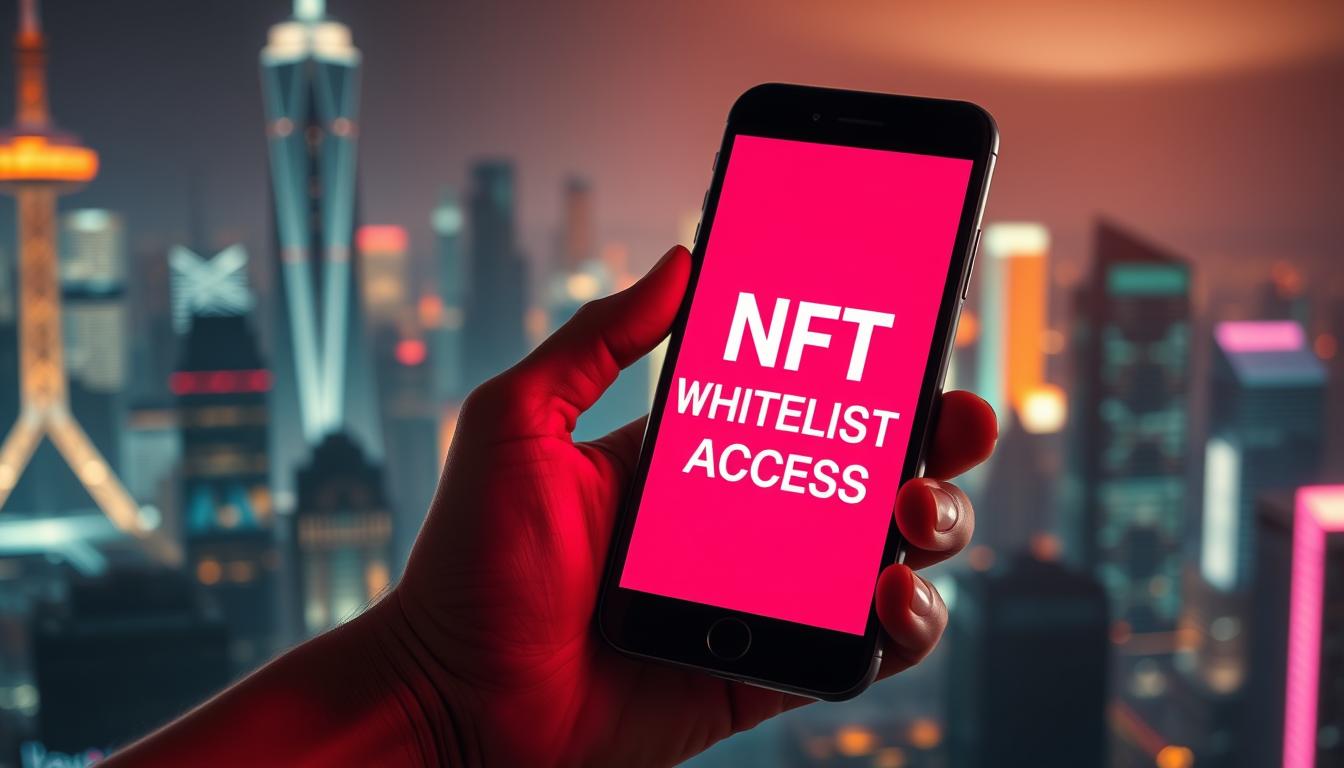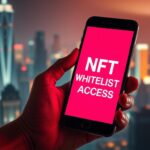Now Reading: NFT Reward Programs for Early Adopters Explained
- 01
NFT Reward Programs for Early Adopters Explained
NFT Reward Programs for Early Adopters Explained

Customer engagement is changing fast. Traditional loyalty systems with points and discounts are no longer enough for many people. A new model is emerging, built on digital ownership and unique experiences.
This guide explores how blockchain technology is creating fresh opportunities for brands. We will look at innovative ways to build stronger connections with your most dedicated customers. These methods offer true digital ownership and lasting value.
The shift is significant. It moves beyond simple transactions to create meaningful participation. Brands that embrace this change can gain a powerful competitive advantage.
Understanding this new landscape is crucial for modern businesses. It helps them connect with audiences who expect more from their favorite companies. This approach fosters exclusive communities and opens new revenue streams.
Key Takeaways
- Traditional loyalty programs are evolving into digital ownership models.
- Blockchain technology enables unique and transferable digital assets for customers.
- Early adoption of these new systems can create a significant market advantage.
- These innovative approaches build deeper, more meaningful brand communities.
- Successful implementation requires a clear strategy and the right technological foundation.
- This model appeals strongly to audiences who value digital immersion and true asset ownership.
Introduction to NFT Reward Programs and Their Potential
Brands are discovering powerful ways to transform casual buyers into dedicated community members. This shift moves beyond simple transactions to create meaningful participation and lasting value.
Defining Digital Tokens and Their Relevance
Non-fungible tokens represent unique digital records on the blockchain. Each token carries a coded stamp signifying authenticity and exclusive ownership rights.
These digital assets extend beyond images to include videos, music, and access passes. Their versatility makes them ideal tools for creating diverse experiences within loyalty initiatives.
The Evolution of Customer Loyalty Models
Traditional systems face significant limitations that frustrate modern consumers. Points expire, rewards cannot be transferred, and benefits often lack personalization.
The transition to token-based approaches addresses these critical issues. It eliminates expiration dates and enables true digital ownership that customers can trade or sell.
| Feature | Traditional Loyalty | Token-Based Approach |
|---|---|---|
| Ownership | Temporary points | Permanent digital assets |
| Transferability | Non-transferable | Fully tradable |
| Expiration | Fixed deadlines | No expiration |
| Personalization | Generic rewards | Unique experiences |
This evolution creates emotionally-driven relationships between brands and their customers. It fosters exclusive communities where members feel genuine connection and lasting loyalty.
Understanding NFTs and Their Role in Loyalty Programs
Digital ownership has emerged as a powerful concept reshaping customer-brand interactions. These unique digital tokens create verifiable proof of ownership that cannot be duplicated.
What are NFTs and How Do They Ensure Exclusivity?
Non-fungible tokens function as unique digital certificates on the blockchain. Each token carries cryptographic verification that ensures its irreplaceable nature.
The appeal lies in digital scarcity. Like original artworks holding value over copies, these assets maintain worth because they cannot be replicated.
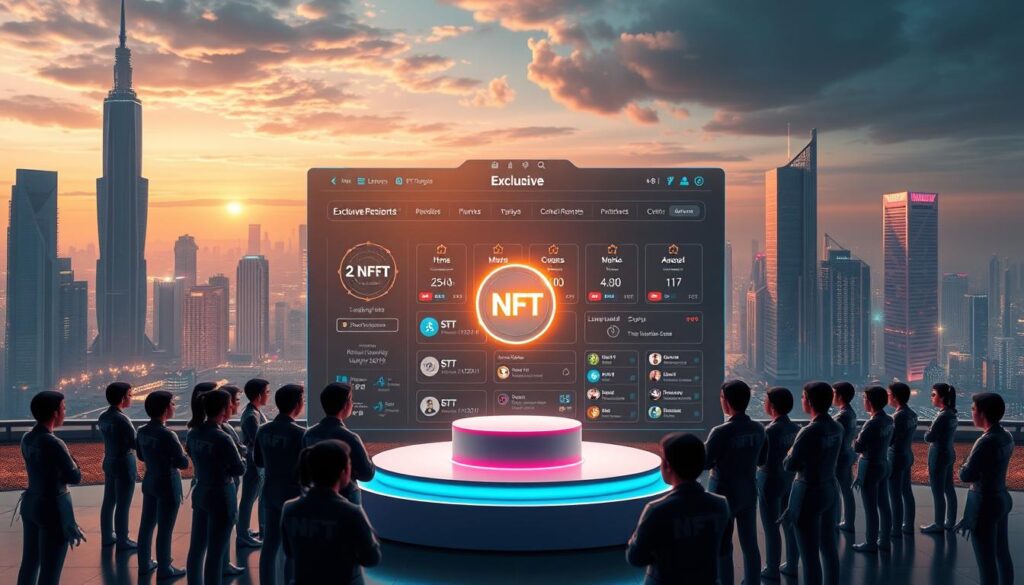
Examples of NFT Applications in Art, Music, and Digital Collectibles
Real-world examples demonstrate diverse applications across industries. Twitter’s CEO sold his first tweet for $3 million, showing how digital moments gain value.
Argentinian designer Andres Reisinger sold virtual furniture usable in platforms like Minecraft. Sports fans purchased a Lebron James dunk clip for $387,000.
| Application Area | Traditional Approach | NFT-Based Solution |
|---|---|---|
| Art Collectibles | Physical prints and copies | Unique digital originals |
| Music Releases | Standard digital downloads | Limited edition tokens with perks |
| Brand Loyalty | Points and discounts | Exclusive digital assets |
| Value Retention | Diminishes over time | Potential appreciation |
Kings of Leon released their album as limited tokens, deleting unsold ones after two weeks. Beauty brand Clinique offered tokens granting decade-long product access. These innovative approaches create lasting customer relationships through exclusive benefits.
NFT reward programs for early adopters: How They Work
Tokenized appreciation systems function through a unique combination of digital ownership and exclusive community building. These innovative approaches transform how brands connect with their most dedicated supporters.

Digital Ownership and Tokenization Explained
Digital tokens create verifiable proof of ownership on blockchain networks. Each token represents a specific benefit or experience that customers can truly own.
The tokenization process converts traditional benefits into unique digital assets. Brands can attach virtually any perk to these blockchain-verified tokens.
| Process Element | Traditional System | Tokenized Approach |
|---|---|---|
| Asset Creation | Points or coupons | Unique digital tokens |
| Ownership Proof | Account-based tracking | Blockchain verification |
| Transferability | Usually restricted | Fully transferable |
| Value Potential | Fixed redemption value | Market-determined worth |
Maximizing Benefits Through Early Adoption
Participants who join these initiatives at launch gain significant advantages. They secure membership in exclusive communities before they become widely accessible.
Early supporters often receive limited edition tokens with enhanced privileges. These digital assets can appreciate in value as the community grows and expands.
The first wave of adoption creates lasting relationships between brands and their most loyal customers. This foundation builds strong emotional connections that drive continued engagement.
Benefits of NFT-Based Loyalty Programs
Tokenized recognition frameworks create win-win scenarios that transform customer relationships. These innovative approaches deliver measurable advantages for both companies and their dedicated supporters.
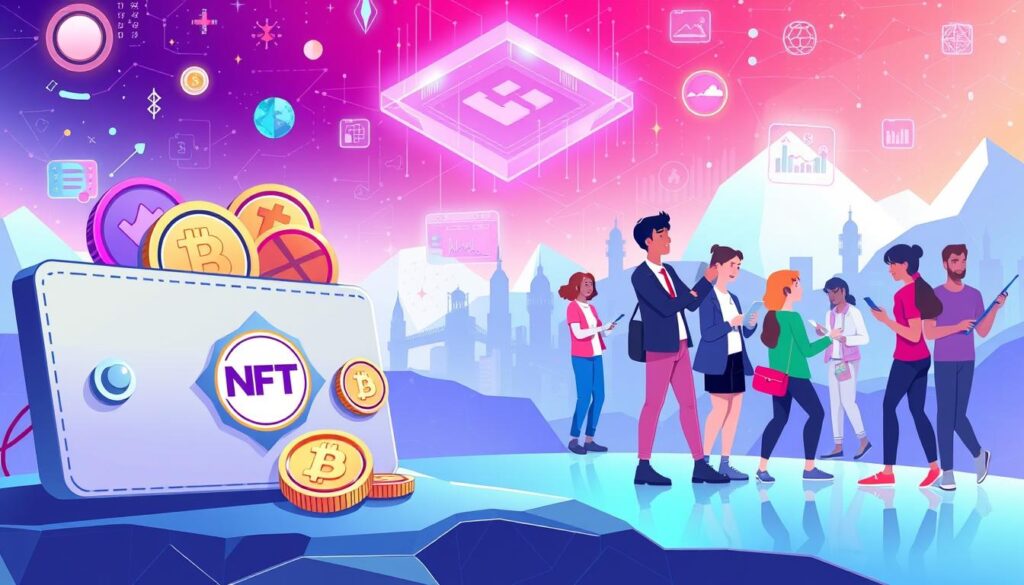
Enhanced Customer Engagement and Brand Loyalty
Digital collectible initiatives drive significantly higher participation rates. Nike’s .SWOOSH initiative demonstrated a 55% increase in customer activity compared to traditional systems.
Ownership creates emotional investment that strengthens brand connections. Token holders develop genuine relationships that extend beyond simple transactions.
Community building emerges naturally as members form exclusive groups. These networks reinforce loyalty through shared interests and collective identity.
Unlocking New Revenue Streams and Exclusive Perks
Companies gain multiple income channels through tokenized appreciation systems. Initial sales generate revenue while secondary market royalties provide ongoing passive income.
Customers receive tangible value that traditional points cannot match. These digital assets don’t expire and can be resold for potential profit.
Exclusive experiences become possible through token-gated access. Limited edition offerings create memorable brand interactions that 75% of consumers prefer according to Forbes research.
Implementing NFT Loyalty Programs: Best Practices and Strategies
Launching innovative digital asset programs involves multiple critical decision points for businesses. Strategic planning ensures successful deployment and long-term customer engagement.

Proper implementation requires careful consideration of technical infrastructure and customer experience. Brands must balance innovation with accessibility.
Selecting the Right Blockchain and Technology Platform
Choosing appropriate blockchain technology forms the foundation of any successful initiative. Different platforms offer varying benefits for businesses.
Ethereum provides robust security and widespread adoption. Polygon offers lower transaction costs and environmental advantages.
The selection process should align with brand values and user experience goals. Technical capabilities must support seamless customer interactions.
Steps to Pilot and Scale Your NFT Reward Program
Successful deployment follows a structured approach. Begin with clear objectives that guide your entire strategy.
Define whether engagement, exclusivity, or retention drives your loyalty program. This clarity shapes reward structures and platform choices.
Test concepts with small customer groups before full launch. Gather feedback to refine your approach and identify technical issues.
Scale gradually while incorporating community input. Continuous improvement ensures programs remain relevant as they expand. Learn more about successful implementation strategies for digital loyalty initiatives.
Case Studies and Real-World Examples of NFT Rewards
Major corporations across diverse sectors are demonstrating successful blockchain-based loyalty strategies. These initiatives show how digital collectibles create meaningful customer connections.
Transformative Success Stories from Art to Airline Industries
Starbucks Odyssey blends coffee culture with digital innovation. Customers earn journey stamps through interactive experiences that unlock exclusive tastings.
Nike’s .SWOOSH platform creates token-gated communities. Members gain early product access and co-creation opportunities within the brand’s ecosystem.
Luxury brands like Gucci use limited edition drops effectively. Their Vault collections serve as both digital collectibles and event access keys.
Airline applications present exciting possibilities. Frequent flyer tiers could unlock progressively valuable digital assets for airport experiences.
Lessons Learned from Leading Brands in NFT Loyalty
Adidas generated over $22 million through their Into the Metaverse campaign. This shows significant revenue potential for well-executed initiatives.
Bloomberg research indicates 20% higher retention rates for companies using these systems. The business impact is measurable and substantial.
Successful implementations share common traits. They offer clear value, integrate seamlessly with existing ecosystems, and build strong communities.
These examples prove that digital ownership models drive deeper engagement. Brands that embrace this approach create lasting customer relationships.
Navigating Challenges and Legal Considerations
Implementing digital collectible initiatives requires careful navigation of complex challenges that traditional systems never faced. Businesses must address both technical and regulatory hurdles to ensure successful adoption.
Addressing Customer Education and Market Volatility
Many users struggle with understanding blockchain technology and digital wallets. This creates significant barriers for businesses launching innovative loyalty programs.
Market fluctuations can impact how customers perceive the value of their digital assets. Companies should design systems that emphasize practical benefits over speculative worth.
| Challenge Category | Specific Issue | Recommended Solution |
|---|---|---|
| User Education | Limited blockchain understanding | Simplified tutorials and onboarding |
| Market Stability | Value fluctuations | Focus on utility over speculation |
| Technical Complexity | Wallet management difficulties | Custodial solutions and support |
| Regulatory Compliance | Evolving legal frameworks | Jurisdiction-specific consultation |
Ensuring Security, Transparency, and Regulatory Compliance
Security remains a top concern for both businesses and customers. Blockchain technology actually reduces fraud by 45% compared to traditional points systems.
Legal considerations include intellectual property rights and data privacy compliance. Companies must stay current with evolving regulations across different regions.
Successful implementation requires partnerships with reputable platforms and clear communication about ownership rights. These strategies build trust while navigating complex requirements.
Conclusion
The landscape of customer-brand relationships is undergoing a fundamental shift through digital tokenization. This approach moves beyond traditional points systems to offer genuine digital ownership and exclusive community access.
These innovative systems provide long-term value for users. Assets do not expire and can be traded, creating tangible benefits alongside exclusive perks. Blockchain technology ensures security and transparency, building trust.
For businesses, this model drives deeper engagement and unlocks new revenue streams. Successful implementation requires careful planning and customer education.
Ultimately, this evolution benefits all parties. It creates meaningful connections and positions forward-thinking brands for future success in the digital economy.
FAQ
What exactly is an NFT loyalty program?
An NFT loyalty program is a modern system where brands use unique digital assets, or tokens, to reward customers. Instead of earning traditional points, members receive blockchain-based tokens that grant access to exclusive perks, experiences, and a sense of community ownership.
How do these digital assets provide more value than standard points?
Unlike standard points that can be earned by anyone, these tokens are scarce and verifiably unique. This creates exclusivity. Owners might get special content, VIP event access, or even a share in future brand success, making the benefits more tangible and personal.
Can you give an example of a successful brand using this model?
A prominent example is Starbucks Odyssey. This platform allows customers to earn and purchase digital collectible stamps that unlock new experiences and benefits, deeply enhancing user engagement and building a stronger brand community.
What are the main benefits for a business implementing such a program?
Businesses gain deeper customer engagement and loyalty. These programs also open new revenue streams through the initial sale or secondary market trading of the assets. They provide rich data on customer behavior and create passionate brand advocates.
Is blockchain technology difficult for customers to use?
Many leading brands design their programs with user-friendliness as a top priority. The technology often works in the background. Customers might interact with a familiar app or website, making the adoption of these digital assets a seamless experience.
What should a company consider before launching an NFT-based initiative?
A> Key considerations include selecting the right blockchain platform for scalability and cost, ensuring robust security, and creating a clear plan for customer education. Addressing regulatory compliance and market volatility is also crucial for long-term success.



